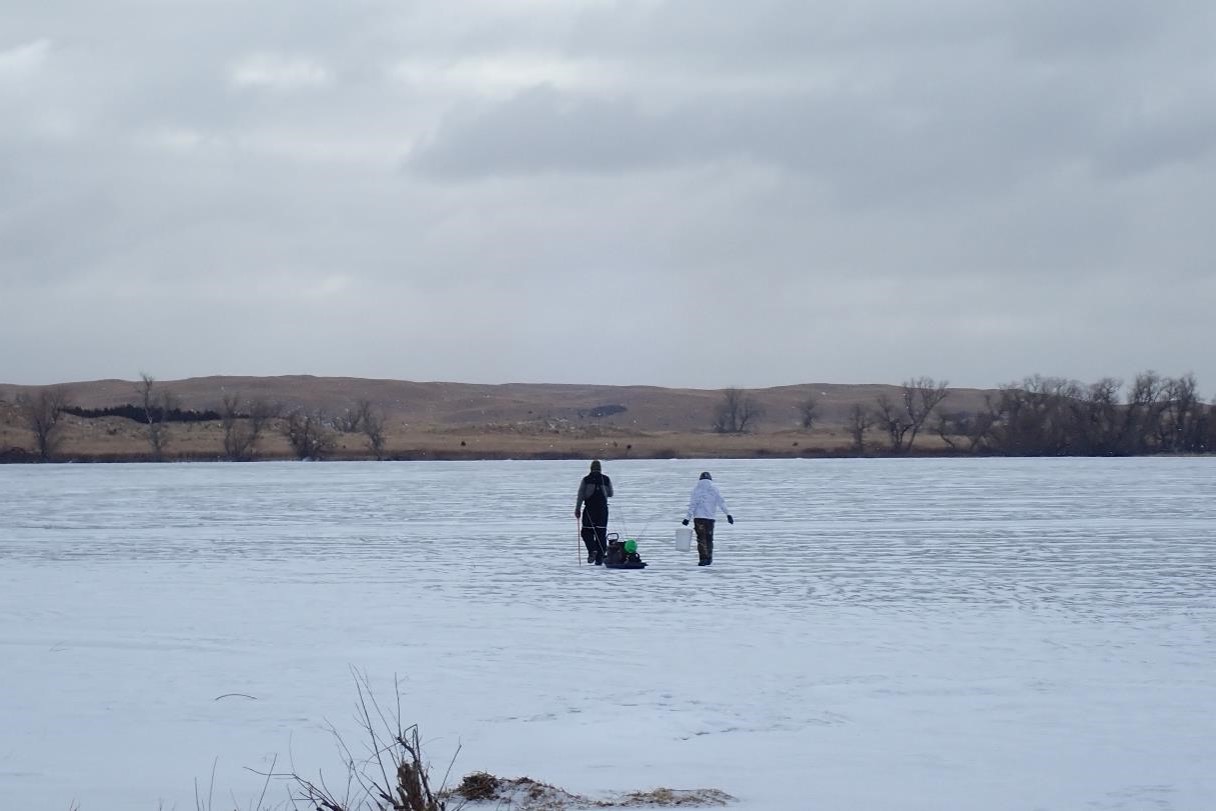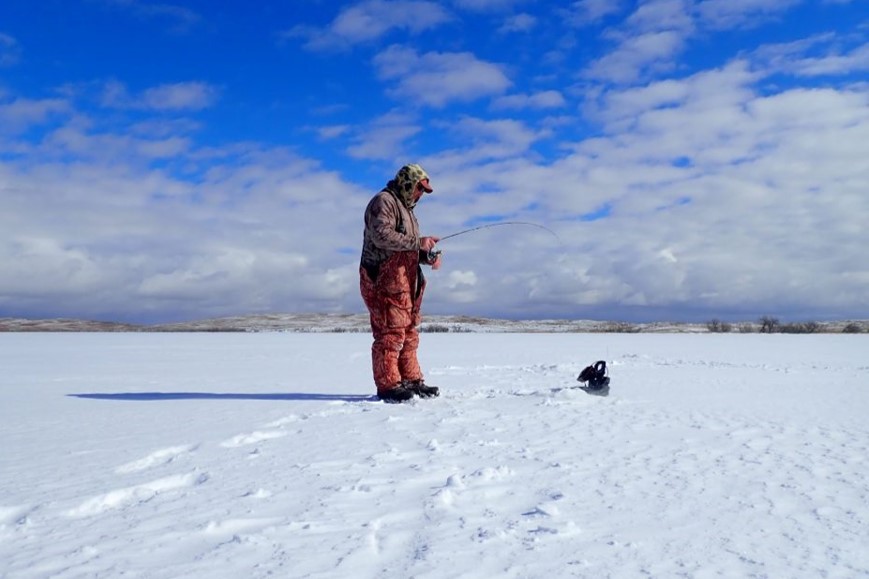
By Daryl Bauer, Fisheries Outreach Program Manager
Yep, going to return to a topic I have already blogged about, many times. Blog about it every year. Already mentioned it once this year. I believe it should be “safety first” and it best not be taken for granted. Ice Safety!
I posted a couple of great videos on the subject back in December, Ice Safety. Please, go back and review those.
Most of all, I want to remind folks that just because we have had a few days of cold weather, DO NOT ASSUME THE ICE IS SAFE! It takes more than just a few days of below freezing temperatures, more than a couple nights of sub-zero temperatures, to make safe ice. Moreover, ice conditions can be variable even on the same body of water let alone from one waterbody to another.
Lord knows the wind blows in Nebraska and that will inhibit ice formation. Another thing, and this may be possible in some parts of the state, snow on top of a skim of ice can insulate and hinder thickening of the ice.
Said all of that to say this, you might be surprised that the ice is not as thick as you would have guessed. Check it, make sure.
I know everyone wants reports on ice thickness; the interwebs are full of those requests and replies right now. One of the best sources of that information would be the Nebraska Fish & Game Association’s Ice Map. I understand wanting to have an idea about ice conditions before you drive halfway across the state. I get it. But, I do not trust any of those reports!
Oh sure, the chatter you hear is indicative of general ice conditions. However, each person has to make sure for themselves, every time they walk on the ice! Check it, make sure, even if you can see other anglers on it.
Additionally, let me say this, measure it! You all know the recommendations for safe ice. You also know how anglers estimate lengths! If you do not measure it, you do not know. Measure it!
Here are some other good ice safety reminders that were recently published in a news release:
Game and Parks offers top 8 ice safety tips
With the arrival of frigid temperatures across the state, Nebraska Game and Parks encourages people to be cautious and use the following safety tips while ice fishing:
1. Tell someone your plan. Whether you are fishing alone or in a group, tell someone where you will be fishing in case trouble arises.
2. Test the ice. The minimum thickness to support one person is 4 inches of clear ice; 7.5 inches will support a group weighing up to two tons or an all-terrain vehicle. Use an ice chisel or spud bar to strike the ice and evaluate conditions as you venture out.
• As winter progresses, ice changes. Cloudy ice of frozen slush is about half as strong as clear lake ice, so people should double the minimum thickness when encountering such conditions.
• Ice near shore may be weakened by heat from the ground, or thinner because of rising water levels. If temperatures are below freezing, but warm during the day, fish early and leave before ice melts near the shore.
• Be especially careful on any ice that has moving water below it. Water movement hinders freezing causing hard-to-detect thin spots.
• Materials embedded in ice, such as weeds or logs, also weaken ice. Large objects on the ice, such as duck blinds or ice shacks, can absorb the sun’s heat and melt ice.
3. Wear ice picks. If the ice breaks, picks help grip the ice to pull yourself out of the water.
4. Wear ice cleats. Avoid falls by wearing ice cleats to maintain traction.
5. Layer your clothing. Begin with a synthetic layer, such as thermal underwear or fleece, followed by a layer of wool. Wool provides excellent insulation and warmth even when damp. Outer layers may include sweatshirts and jackets covered by heavy parkas, bibs or coveralls. Carry at least a couple of pairs of gloves or mittens. Remove layers during periods of activity, such as manually drilling ice holes, to avoid sweating, and add layers during periods of inactivity.
6. Bring extra clothing. Keep a set of dry clothes in your vehicle in case you get wet.
7. Bring a long throw rope. A rope can be thrown from a safe location to retrieve a person who has fallen through the ice. A big loop on the end with a float attached will help the imperiled person grab it with their arms instead of cold fingers.
8. Avoid alcoholic beverages. Alcohol can affect judgment and increase chances of hypothermia.
Purchase a 2025 fishing permit, find a water body near you, or discover additional fishing resources at OutdoorNebraska.gov.

